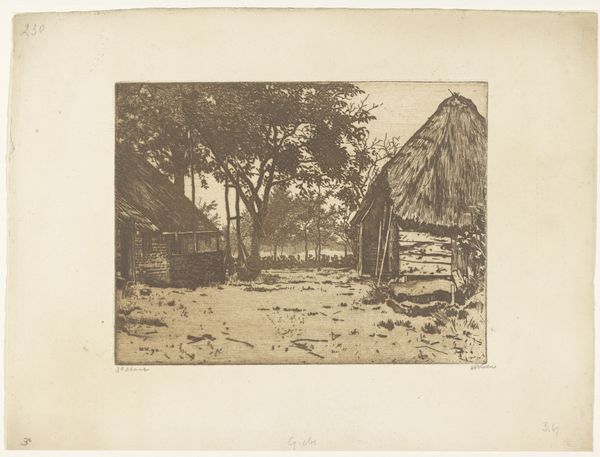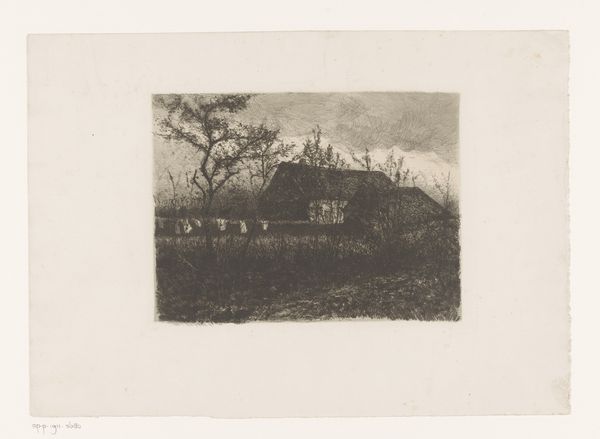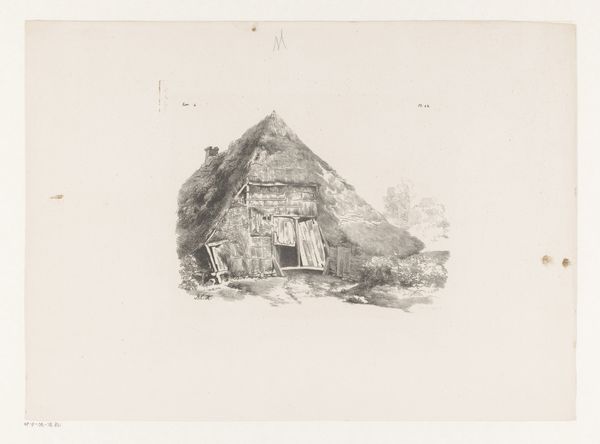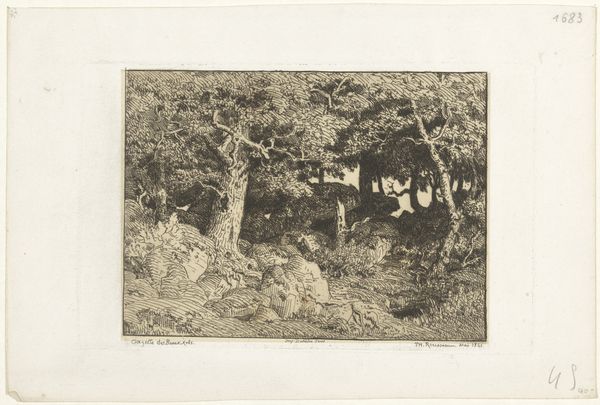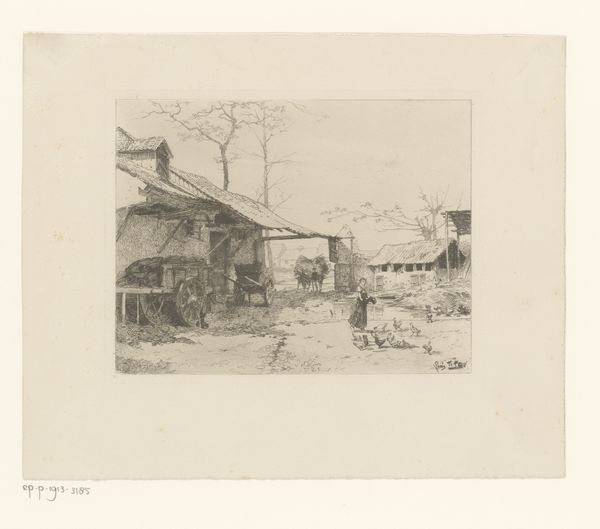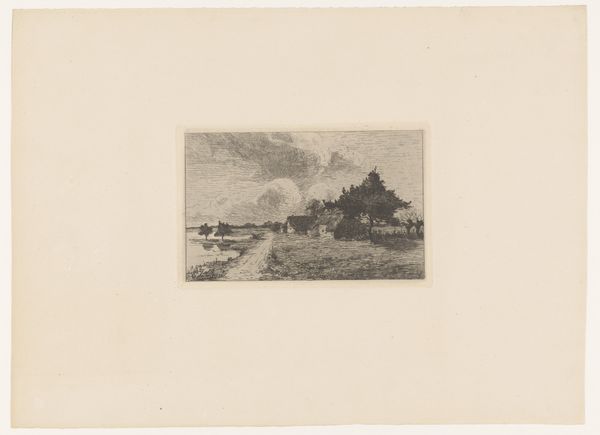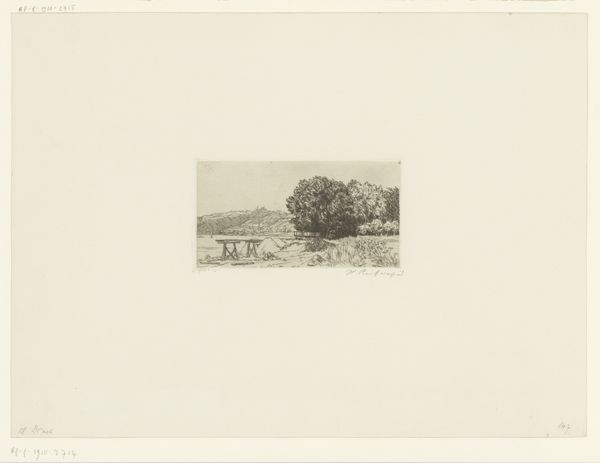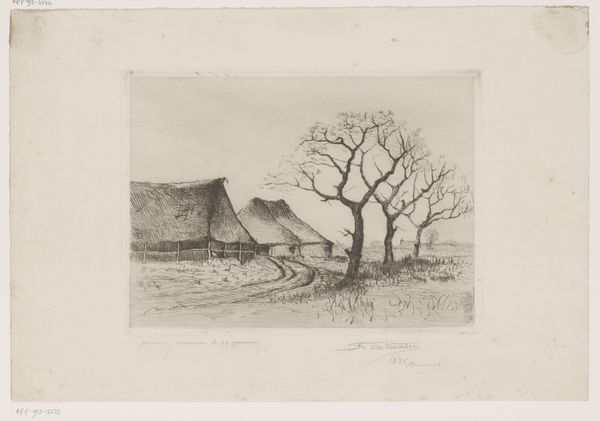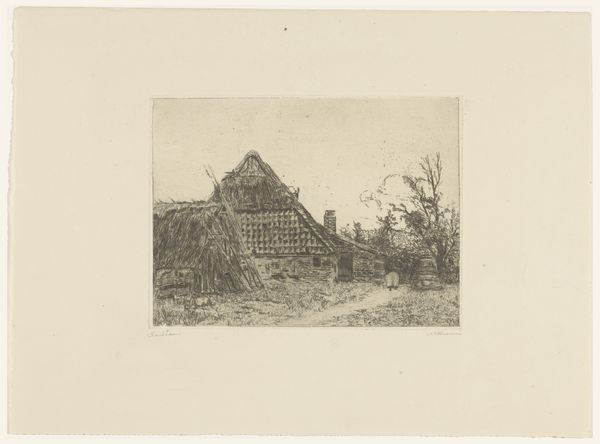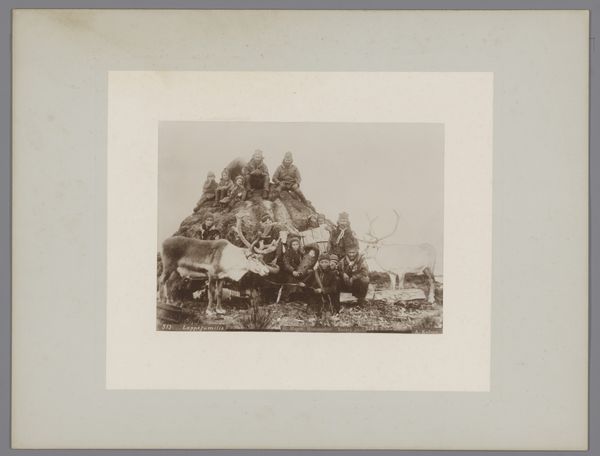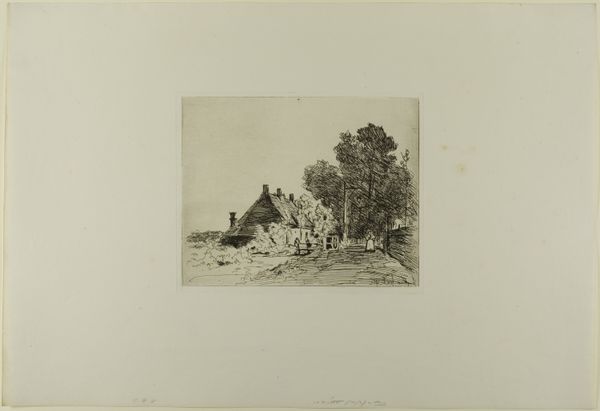
print, etching
#
dutch-golden-age
# print
#
etching
#
landscape
#
realism
Dimensions: height 119 mm, width 157 mm
Copyright: Rijks Museum: Open Domain
Editor: This etching, "Achterkant van een schuur in Brabant," or "Back of a Barn in Brabant," was created by Willem Witsen in 1892. It feels so subdued and almost secretive, a peek into a very quiet world. How would you interpret its visual structure? Curator: The formal composition immediately draws the eye. Observe how Witsen employs a limited tonal range, emphasizing texture and form over vibrant color. The deeply etched lines defining the thatched roof create a compelling contrast with the smoother planes of the distant structures. This tension generates visual interest. Do you notice anything specific about the distribution of light? Editor: It’s dim overall, but there's a definite play of light and shadow that really defines the textures, like on the thatched roof and the rough ground. Curator: Precisely. The strategic use of chiaroscuro directs our gaze and contributes significantly to the somber mood you initially observed. The bare trees also punctuate the image. Their stark forms create a kind of visual rhyme against the imposing mass of the barn itself. The subtle asymmetry provides dynamism, preventing the scene from becoming static. Consider how these elements work together to shape your understanding. Editor: I see, the contrast and asymmetry aren't just aesthetic choices. They influence how I perceive the scene, the way I move around the composition. Thanks! I’ve never thought about a landscape this way. Curator: A work like this demands we consider every formal choice as a meaningful construction of experience. A true testament to formalist criticism.
Comments
No comments
Be the first to comment and join the conversation on the ultimate creative platform.


